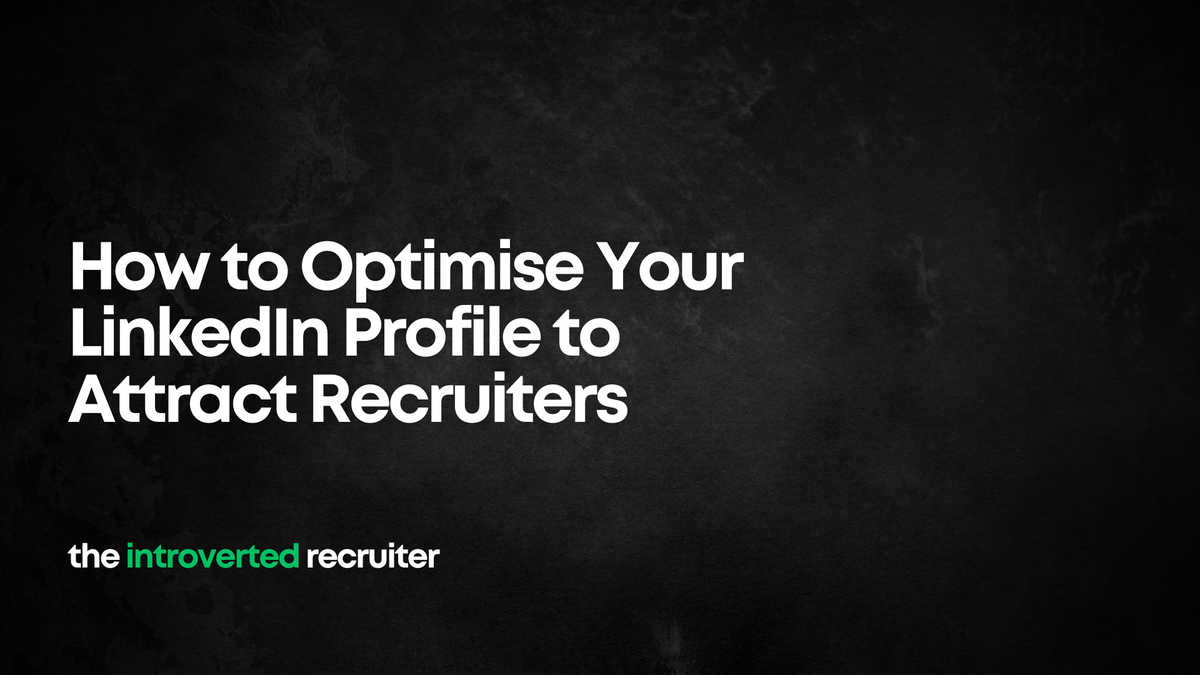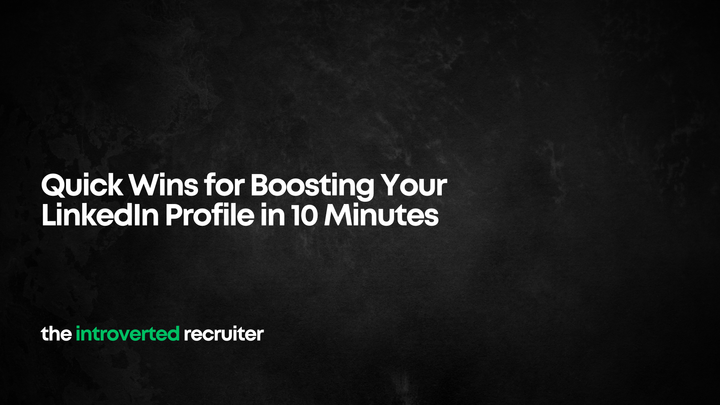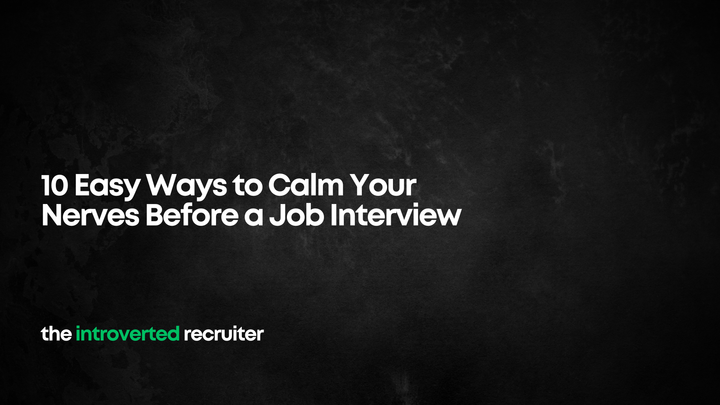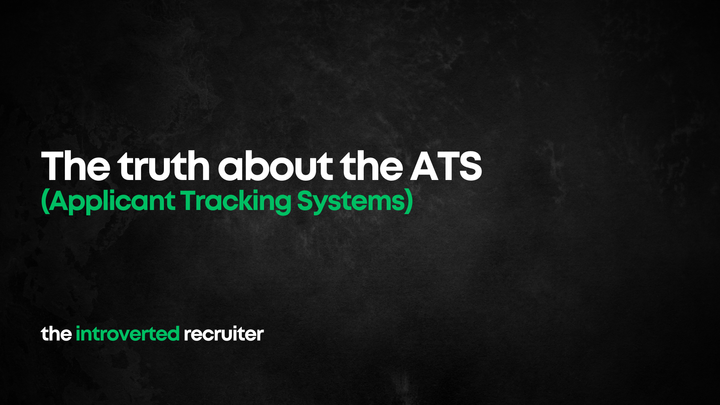How to Optimise Your LinkedIn Profile to Attract Recruiters

If you’re job hunting and you’re not using LinkedIn to its full potential, you’re making things harder for yourself. LinkedIn is the number one platform recruiters use to find candidates. It’s their playground, and if your profile isn’t optimized, you’re missing out on serious opportunities. So how do you make your LinkedIn profile irresistible to recruiters? It’s all about visibility and impact.
In this article, we’ll go through everything you need to do to optimize your LinkedIn profile so recruiters can easily find you—and when they do, they’ll know exactly why you’re the perfect fit for their role.
1. Craft a Compelling Headline
Your headline is prime real estate. It’s one of the first things people see when they come across your profile, so don’t waste it by just listing your job title. Your headline needs to say who you are, what you do, and the value you bring.
Most people make the mistake of just using their job title, like “Marketing Manager” or “Software Engineer.” But this tells recruiters nothing about the impact you can make. Instead, use this space to highlight your unique skills or the problems you solve.
Example:
- Instead of “Project Manager,” try: “Project Manager | Delivering Complex Projects on Time and Under Budget.”
- Instead of “Graphic Designer,” try: “Graphic Designer | Specializing in Brand Identity and UX/UI Design.”
Action step: Update your LinkedIn headline to reflect not just your job title, but also your expertise and the value you offer. Keep it under 120 characters for maximum impact.
2. Write a Strong “About” Section (Your Career Story)
Your “About” section is where you can tell your career story—the narrative of who you are, what you’ve achieved, and what you bring to the table. Think of it as a summary of your personal brand (which we’ve already covered in another article). This section should be engaging, concise, and focused on your strengths and accomplishments, not just your responsibilities.
Don’t just list out your job history here. This is your chance to show a little personality while highlighting the unique skills and experiences that make you stand out. And remember—recruiters are looking for what you can do for them, so frame your story around the value you provide.
Pro tip: Use a conversational tone in your “About” section to make it more relatable. It doesn’t need to sound like a corporate bio.
Example:
I’m a marketing professional with 8+ years of experience helping brands increase their digital presence through data-driven strategies. I specialize in creating multi-channel campaigns that drive both brand awareness and measurable results. I’m passionate about storytelling and thrive in dynamic environments where I can use my creativity to solve complex problems. When I’m not working, you’ll find me mentoring new marketers or staying on top of the latest digital trends.
Action step: Take 15 minutes to rewrite your “About” section. Focus on the value you bring, and use specific examples of how you’ve helped previous employers or clients achieve success.
3. Focus on Quantifiable Achievements in the Experience Section
The experience section is where most people make the mistake of simply listing their job responsibilities. But recruiters don’t care as much about what you were supposed to do—they care about what you actually achieved.
For each role, list your responsibilities briefly, but make sure to highlight your achievements. Use metrics and numbers whenever possible to show the impact you made. If you saved the company money, increased sales, improved processes, or led successful projects, say so—and use data to back it up.
Examples:
- “Increased customer retention by 15% through the development and implementation of a new CRM system.”
- “Led a cross-functional team that delivered a critical project 2 weeks ahead of schedule, resulting in a $100K savings.”
Action step: Go through your experience section and add at least one quantifiable achievement for each role. Use numbers to showcase your impact—whether it’s revenue growth, cost savings, or efficiency improvements.
4. Pin Your Most Relevant Skills at the Top of Your Skills Section
Your skills section plays a huge role in how you show up in recruiter searches on LinkedIn. Many recruiters filter candidates by skills, so if your profile doesn’t have the right ones listed, you won’t show up in their search results.
LinkedIn allows you to pin three skills at the top of your profile. These should be your most relevant and in-demand skills for the roles you’re targeting. Make sure they match the keywords that recruiters are likely to search for in your industry.
Pro tip: Keep your skills section clean. It’s tempting to add every skill under the sun, but focusing on your top skills helps paint a clearer picture of what you’re best at.
Action step: Identify the top three skills most relevant to your industry and the jobs you’re applying for. Pin them at the top of your skills section and ensure your other listed skills are accurate and up-to-date.
5. Get Recommendations (Social Proof Matters)
LinkedIn recommendations are a form of social proof. They give recruiters insight into what it’s like to work with you, and they lend credibility to your claims. The best recommendations come from former managers, colleagues, or clients who can speak to your strengths and achievements.
Don’t be afraid to ask for recommendations. The key is to make it easy for the other person—when you ask, give them a few pointers on what they might want to highlight in the recommendation. This can be especially helpful if you’re asking someone who’s busy or not sure what to focus on.
Example:
Hi [Name], I hope you’re doing well! I’m in the process of updating my LinkedIn profile and was wondering if you’d be open to writing a quick recommendation about our work together at [Company]? It would be great if you could highlight [specific project or skill]. I’d be happy to do the same for you!
Action step: Reach out to 2–3 former colleagues or managers and ask for recommendations. Be specific in your request so they know what to focus on.
6. Customize Your LinkedIn URL
This is a small but powerful step that often gets overlooked. By customizing your LinkedIn URL, you make it easier for recruiters to find you and share your profile. It also makes your profile look more polished when you include the URL on your CV or email signature.
Example: Instead of “linkedin.com/in/JohnDoe123456,” it could be “linkedin.com/in/JohnDoeMarketingPro.”
Action step: Go to your profile settings and create a custom LinkedIn URL using your name or a combination of your name and profession.
7. Turn On the “Open to Work” Feature
If you’re actively looking for a job, make sure you turn on LinkedIn’s “Open to Work” feature. This feature allows recruiters to know that you’re open to new opportunities. You can customize it to show the types of roles you’re interested in, preferred locations, and whether you’re open to remote work.
The best part? You can choose to make this visible only to recruiters, so your current employer won’t see it.
Action step: Turn on the “Open to Work” feature in your LinkedIn settings and customize it with the specific job titles and locations you’re interested in.
8. Engage Regularly with Your Network
Optimizing your LinkedIn profile isn’t a one-time thing. To stay visible to recruiters and potential employers, you need to engage regularly with your network. Share articles, comment on posts, and participate in discussions related to your industry. This not only keeps your profile active but also positions you as someone who’s knowledgeable and engaged in your field.
Action step: Commit to engaging with at least one post or sharing an article on LinkedIn once a week. This will keep you top of mind and help build your reputation within your network.
Final Thoughts: LinkedIn Optimisation Is a Must for Job Seekers
Your LinkedIn profile is more than just a digital resume—it’s your professional brand online. By optimizing it, you’re making it easier for recruiters to find you and giving them a clear picture of who you are and what you bring to the table.
From crafting a compelling headline to quantifying your achievements, each step in this guide will help you stand out in a sea of candidates. And remember, LinkedIn is an active platform, so engage with your network regularly to stay visible and relevant.
Sign Up For My Newsletter
Sign up for my free newsletter on SubStack for all the latest content straight into your inbox as well as a free Job Search Guide & CV Template.
Follow Me
Find me on LinkedIn , TikTok , YouTube or Instagram where I share lot’s of practical no nonsense advice.



